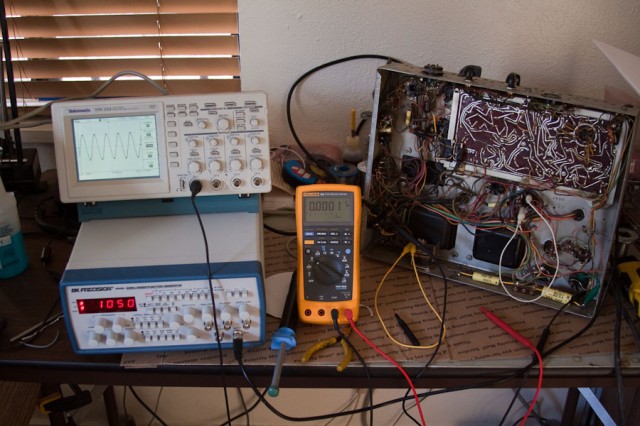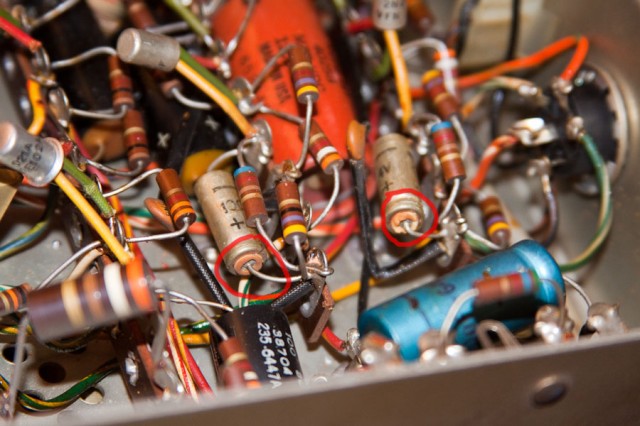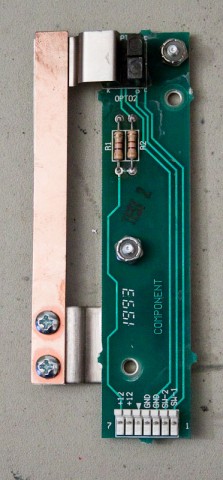Location: Henderson, CO
Symptoms: Both record lifting arms jammed into the record carousel. The carousel was unable to rotate. Trip switch not working.
I spent a good half-hour trying to unjam the record arms from the carousel and realized there was no hope without total dis-assembly. Both tips were bent over facing the rear of the jukebox. I’m not sure how they got that way, possibly when the jukebox was moved to the basement. I’m surprised the plastic tips hadn’t broke. The only option was remove to the record playing mechanism from above the carousel, then remove the carousel. I advised the owner that this was going to take several hours. I got the go-ahead.
Once everything was disassembled, I noticed the three rollers that support the carousel were frozen. A generous dousing of WD-40 didn’t solve the problem. I finally took a pair of pliers and rocked the rollers back and forth sideways to break whatever corrosion or gunk kept them from turning. That worked. Then another dousing of WD-40. I followed up with regular oil and all three rollers were spinning freely again.
The tips on the record lift arms needed to rebuilt after being jammed. They are spring loaded and should open up as the arm rises into the carousel. I disassembled each tip, cleaned, readjusted, and lubricated with silicone.
I put the mechanism back together and did a couple of trial runs with no records installed. Everything seemed to be working great.
Once again, another bad trip switch. I encounter these a lot on later model Wurlitzers. As I have described here in this log before, I broke open the cover and flushed with contact cleaner. It’s pretty much all one can do, as you really can’t get to the contacts themselves with any kind of abrasive. I reassembled the trip switch, adjusted it, and played several records. Seemed to work okay after that. On the jukeboxes I have done this, they are still working after nearly two years. But still, it would be nice to find a replacement switch.



